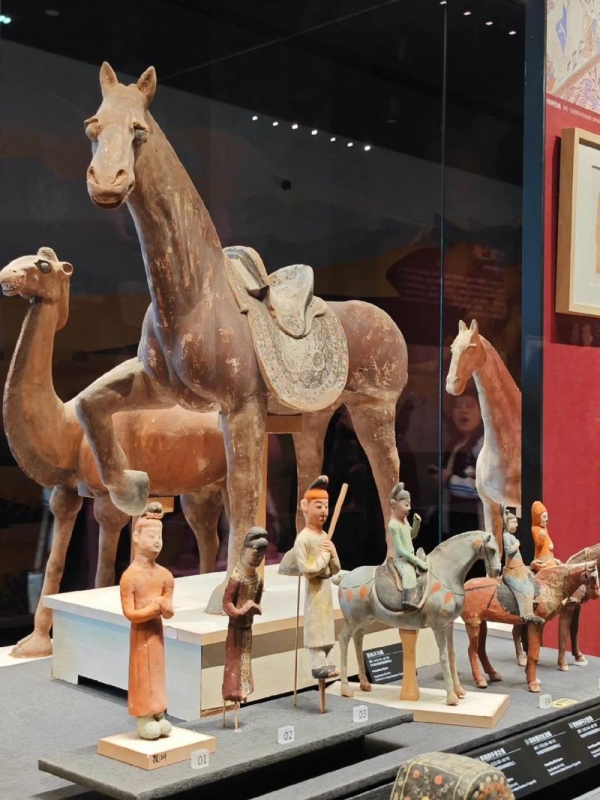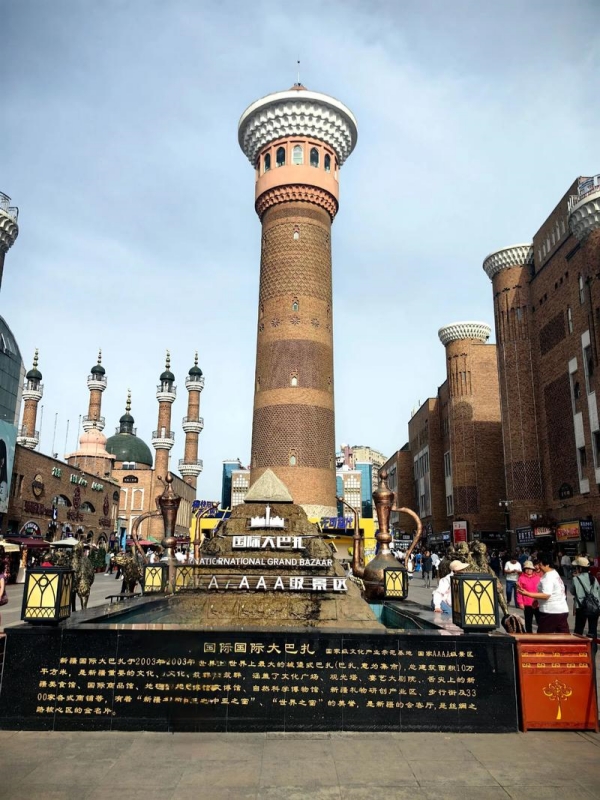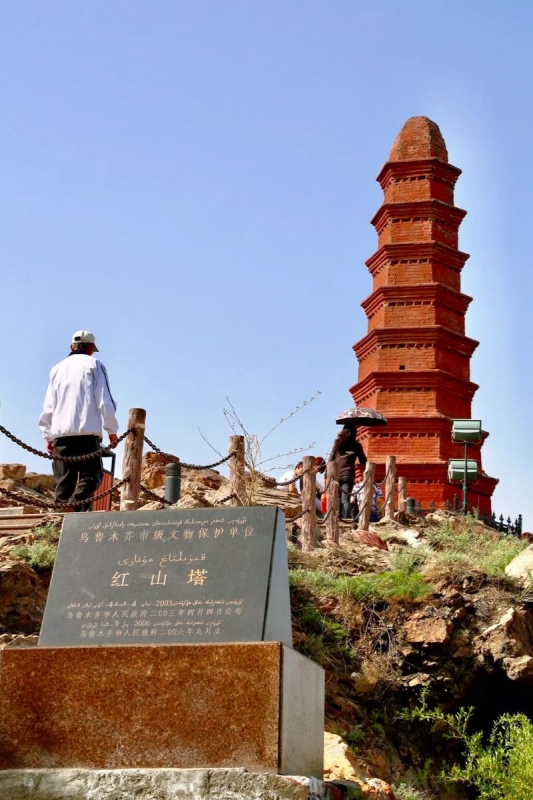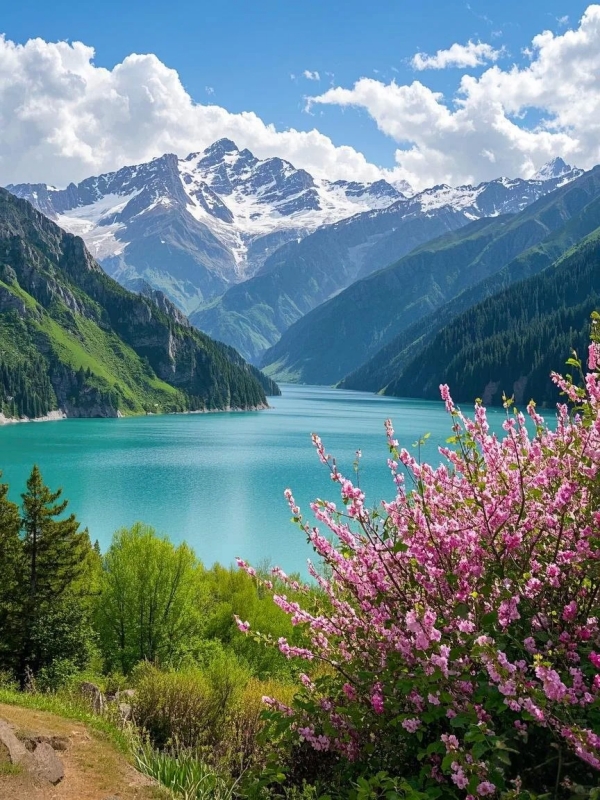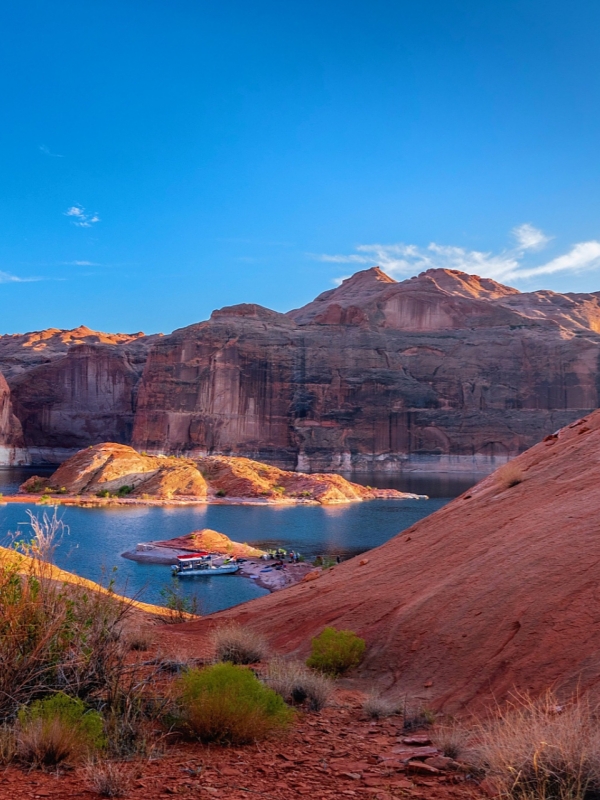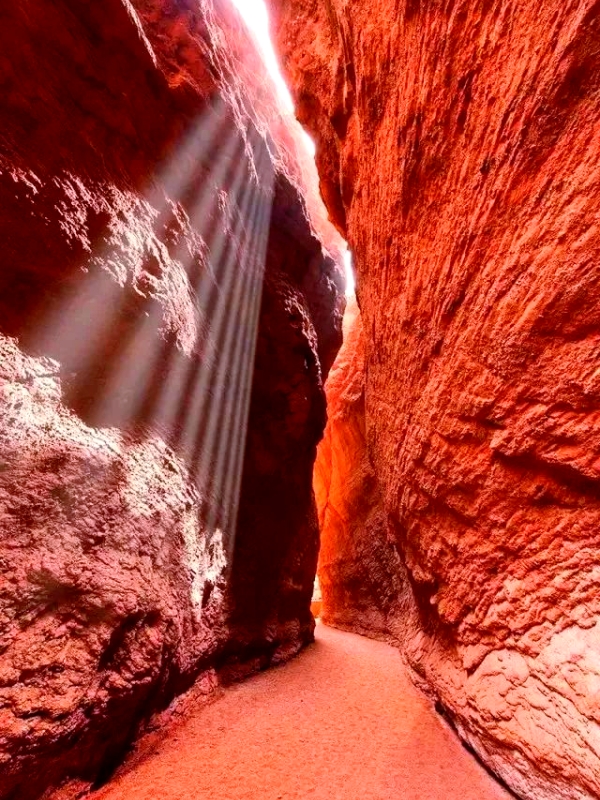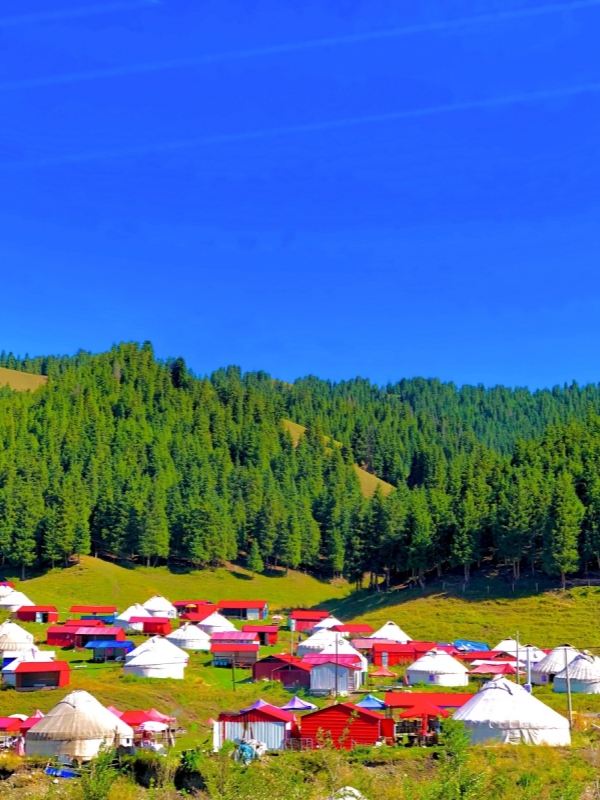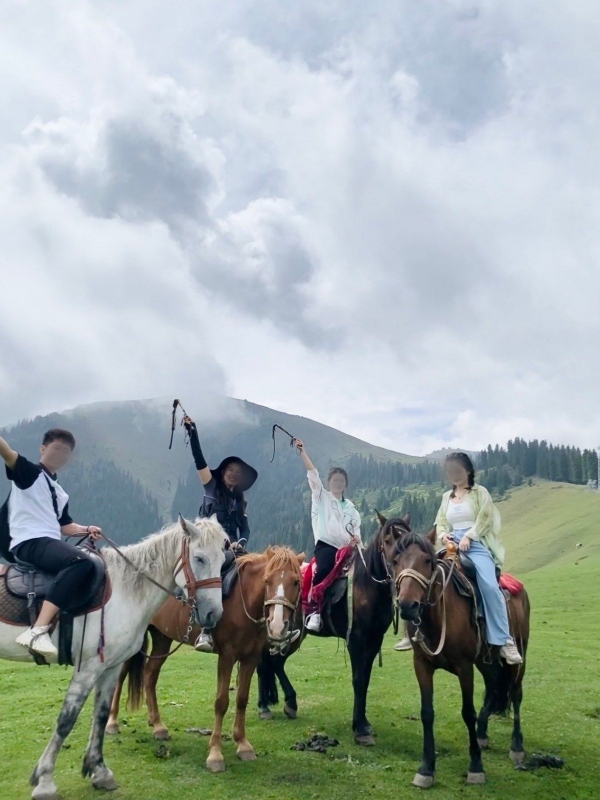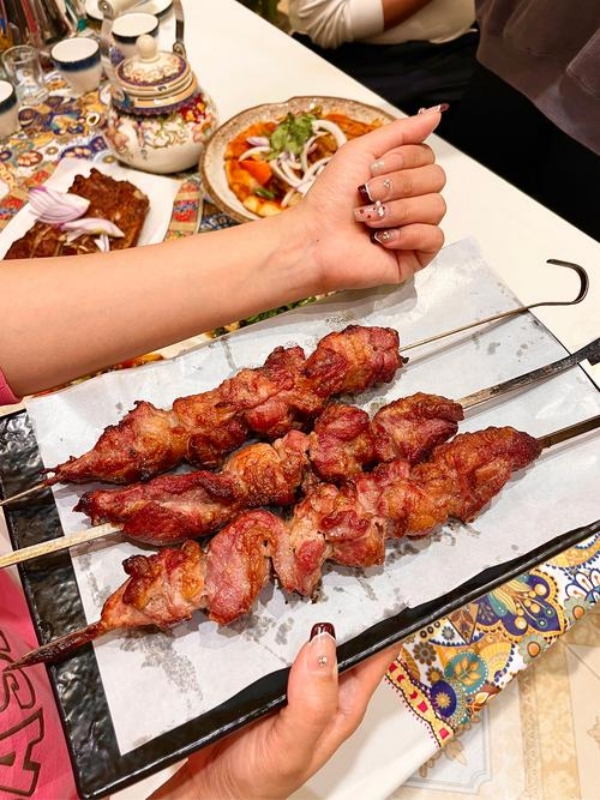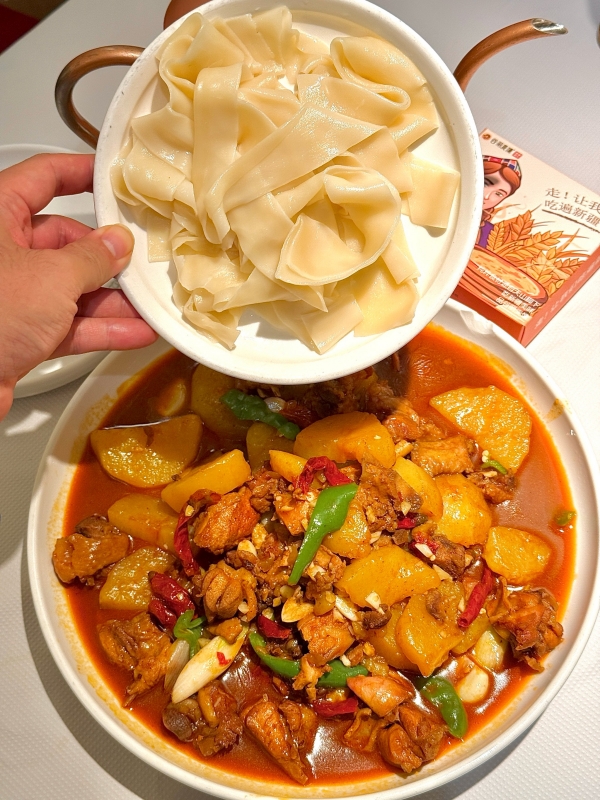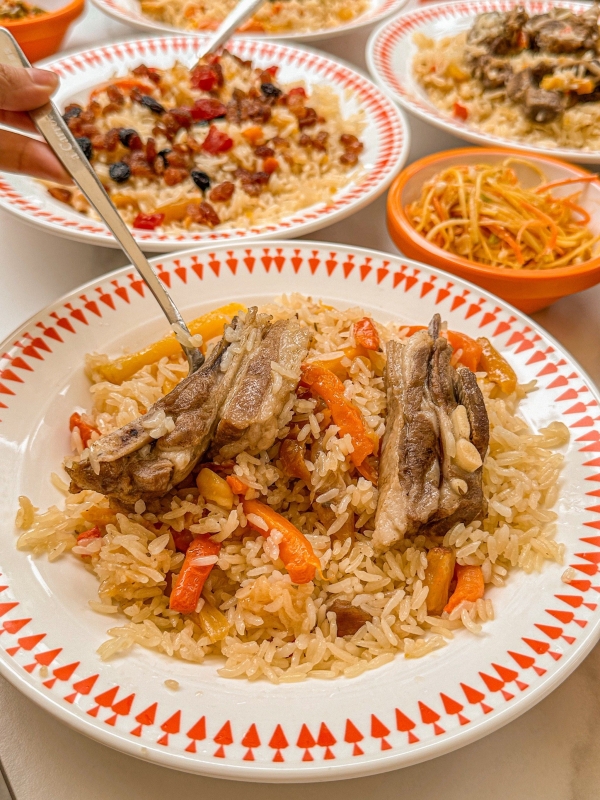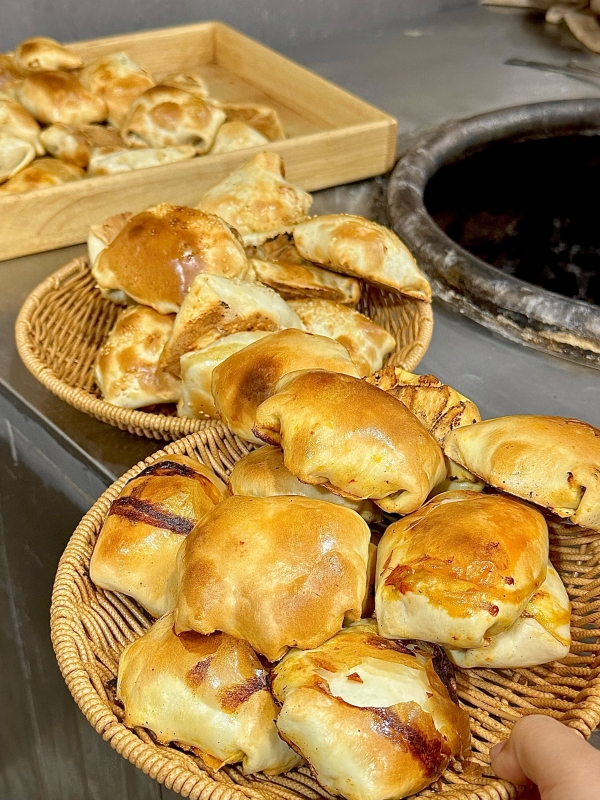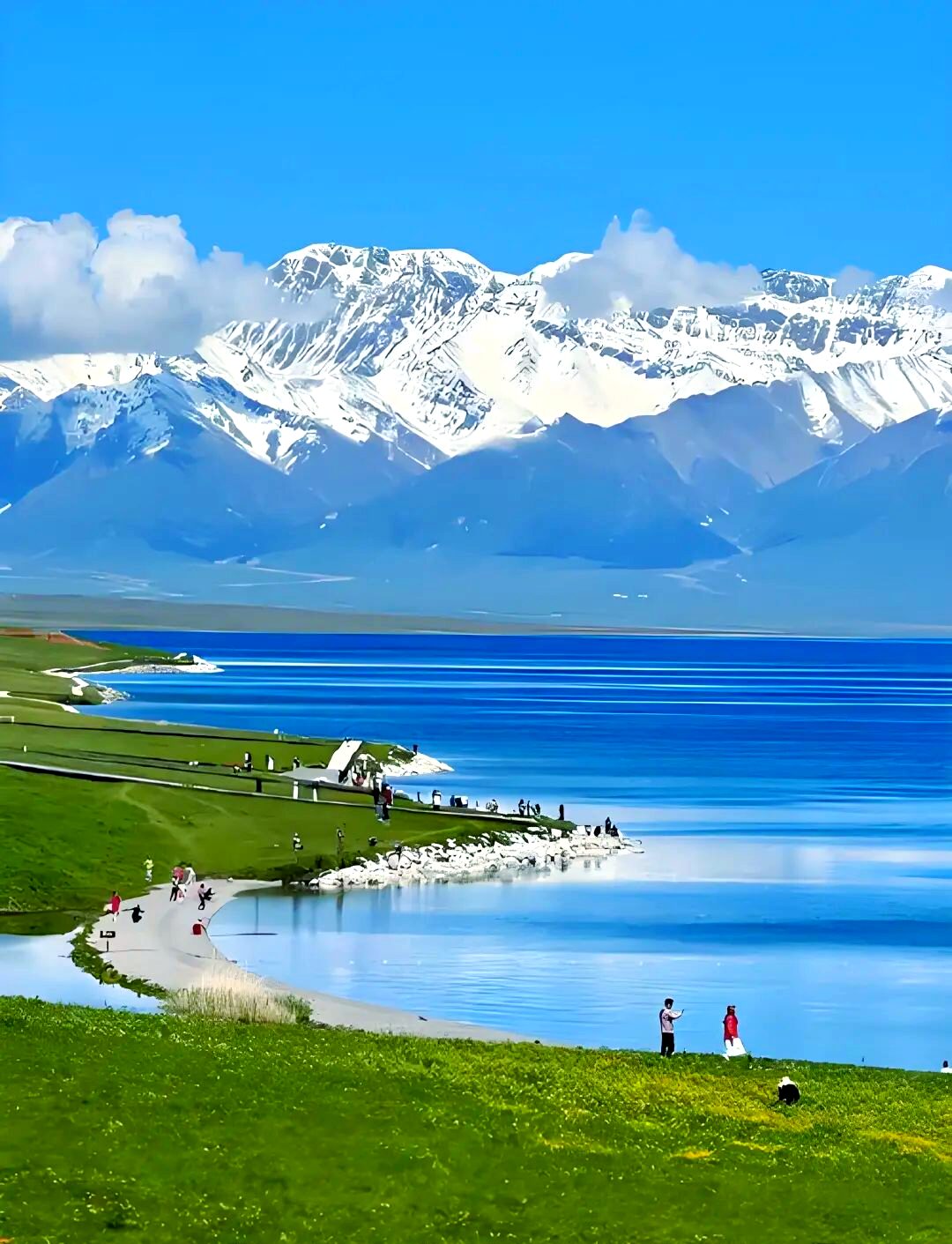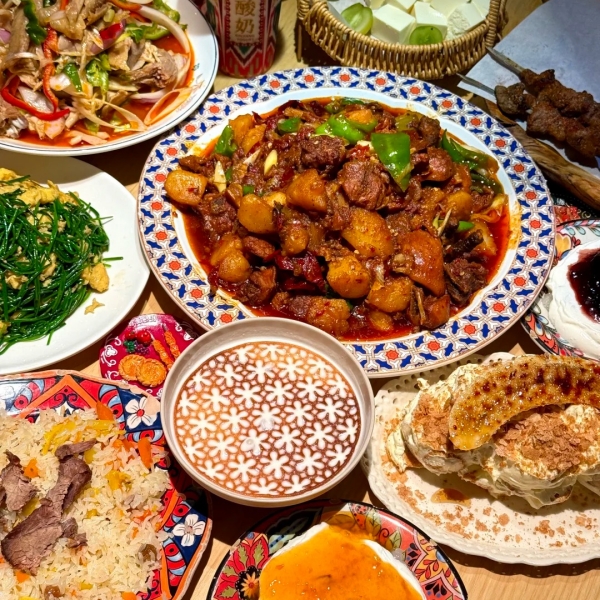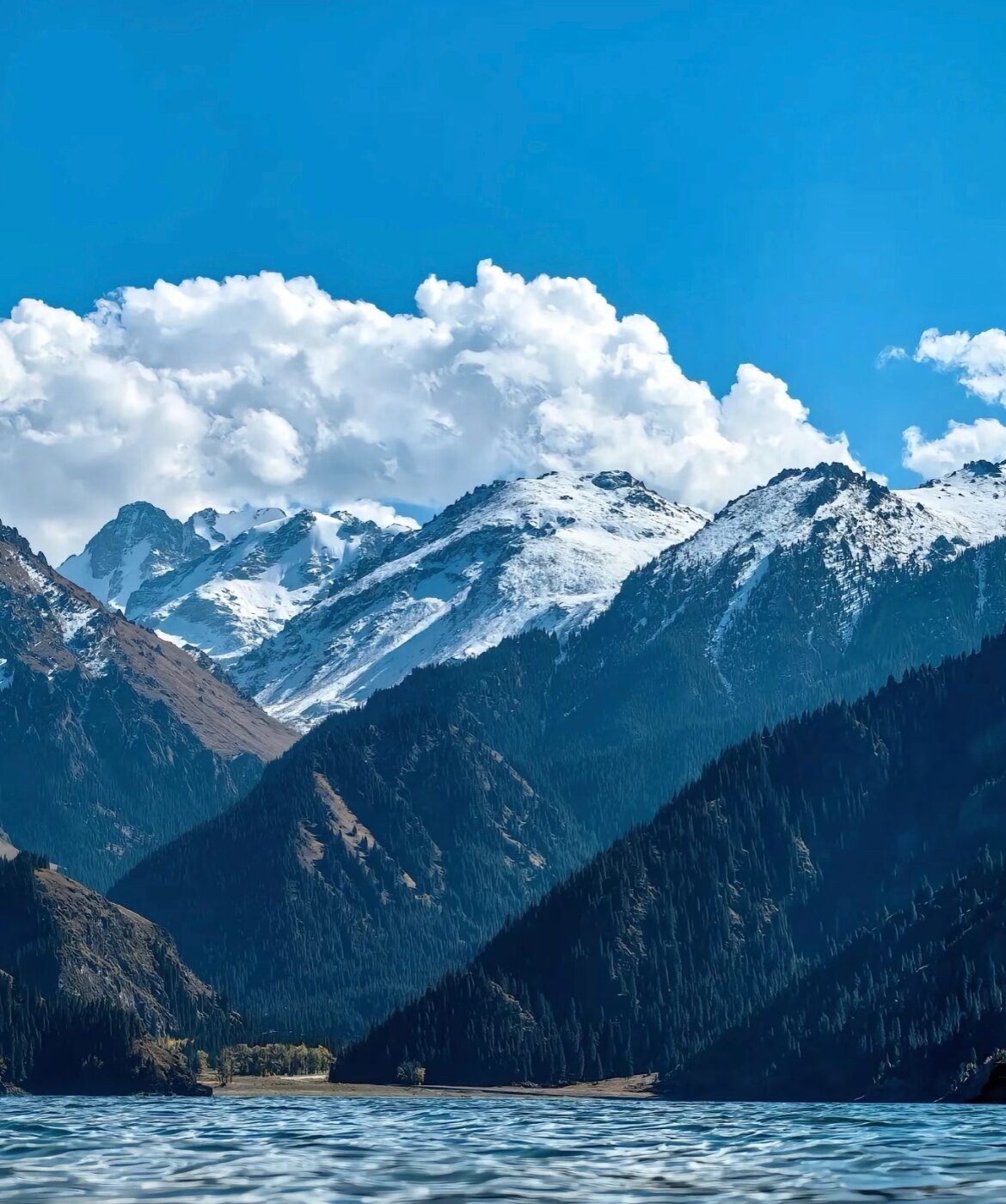
Urumqi Grand Bazaar
Is Urumqi worth visiting? YES, but not for the reasons you think. There are no grand monuments or cutting-edge Insta-posing sites. Urumqi is special because it’s the genuine cultural meeting point of 13 different nationalities; a place where you meet 3,800-year-old mummies in the morning and later barter for silk scarves at the bazaar. Most choose it so they can sweep south to the deserts and mountains of Xinjiang proper, and we agree. 1-3 days is plenty.
This guide is all about sharing what I learnt from my time exploring Urumqi, including year 2025 most useful information, and what you can skip. By the end, you’ll know exactly how to plan your time and makethe most of this suigeneris city.
Quick Info of Urumqi
| Aspects | Brief Introduction |
|---|---|
| Geographical Uniqueness | The most landlocked major city globally, over 2,500 km from any ocean, located at the core of the ancient Silk Road. |
| Historical Evolution | A vital hub on the ancient Silk Road; has a long history of border reclamation and ethnic integration; developed into Xinjiang's capital with modernization. |
| Ethnic Culture | A multicultural melting pot with Uyghur, Kazakh, Han and other ethnic groups; features unique customs like Aken singing, Meshrep and traditional dances. |
| Natural Scenery | Combines urban landmarks (Red Hill Park) and natural landscapes; nearby attractions include Heavenly Lake, Nanshan Pasture and Tianshan Grand Canyon. |
| Taboos & Etiquette | Respect Islamic customs (e.g., avoid pork in Muslim areas); maintain silence near mosques during prayer times; ask permission before taking photos of locals. |
Core Must-See Experiences: Downtown Highlights
Xinjiang Regional Museum: A Spot Where to Meet 3,800-Year-Old Mummies
This is the main reason to visit Urumqi. In my opinion, it's one of China's most underrated museums—not just a collection of artifacts, but genuine time travel to the Silk Road era. If you only have time for one thing in the city, make it this.
What You'll Experience:
1. The Beauty of Loulan: A 3,800-year-old mummy so remarkably preserved that her hair, skin, and clothing remain visible. I watched visitors gasp as they realized they were looking at an actual person from ancient times—not a reconstruction. A tourist next to me whispered, "I didn't expect to see THIS in China." The mummy proves that Caucasian and Turkic peoples lived in this region millennia ago, rewriting simplistic narratives about Chinese history.
2. Han Dynasty Brocade: The famous silk piece inscribed with "Five stars rising in the East benefit China"—a national treasure so precious it's forbidden to be exhibited abroad. The mysterious prophecy woven into ancient silk remains an unsolved puzzle.
3. Ethnic Heritage Displays: Traditional costumes from all 13 ethnic groups that call Xinjiang home. This isn't dry museum text—it's living history through artifacts, connecting directly to the cultural diversity you'll see on the streets outside.
Practical Must-Knows
- Admission: FREE! But requires advance booking online
- Hours: 10:00-18:00 (closed Mondays, ticket checking stops at 17:30)
- Location: 581 Xibei Road, Saybagh District
- Critical warnings: Bring your passport (security is extremely strict). Online booking required. Photography banned in mummy halls. Peak crowds 12-2pm—go at 10am or after 3pm. No English guided tours available (download audio guide app or hire private guide).
Grand Bazaar + Erdaoqiao Market: Dual Bazaar Experience
Walking into the recon.erp market of the Grand Bazaar is a sensory overload. The smell of cumin-rubbed lamb kebabs waft through the air alongside fresh-baked nang bread. Emerald green and gold domes soar overhead while Uyghur women in traditional dresses whirl around the curves. The mosque’s call of prayer clash with vendors bellowing Cheap! Cheap! You run your fingers across silk scarves, smooth, fragrant and curling around cool copper teapots. True, it is a reconstruction, far from authentic, but it’s a beautiful version and the best introduction to the culture of Xinjiang in the city, and very photogenic.
Erdaoqiao Market is the place where the locals shop. Prices on dried fruits and nuts are generally 20-30% cheaper than Turkey’s Grand Bazaar and slightly less touristy. More authentically ‘local’ type of shopping than waiting at bartering stalls for souviers. Well, “of common use”! Smaller stalls in less fancy surroundings. Here, you can observe indigent culture as locals haggle away in Uyghur and Mandarin; here, you can buy dried fruit in bulk! And spices (particularly cumin, chili powder), nuts and seeds, Uyghur hats (doppa), scarves for common daily use made of silk. Food stalls too, though less “tourist friendly”.
Practical Info - Combined Visit
- Admission: Both free entry, Tower 50 rmb
- Best Times: Grand Bazaar shops 10am-11pm (most lively 5-9pm). Erdaoqiao 10am-10pm (morning good for fresh produce).
- Transport: Metro Line 1 to Erdaoqiao Station. 30-minute walk from Red Hill Park. Taxi from city center 15-20 rmb.
Red Hill Park (Hongshan): Panoramic City Views & Local Life
Red Hill is the Urumqi’s geographic and cultural heart: a 910m-high outcrop red sandstone virtually in the heart of the city. In the strict meaning of “tourist attractions,” it’s hardly a “must see,” but it definitely has one thing going for it: a glimpse into the lives of people who live here, along with great bird’s-eye views of the city and the surrounding mountains.
What Makes It Special: This is where Urumqi residents exercise, socialize, practice tai chi, and fly kites. The summit pagoda offers 360-degree views—Tianshan Mountains to the south, sprawling city below, desert hints to the north. Go at sunrise or sunset for the best light and atmosphere. The reddish rock formations create stunning color contrasts, especially at golden hour.
Practical Info
- Admission: FREE
- Hours: 6:00-23:00 daily
- Time needed: 1-2 hours
- Best times: Sunrise (6-7am) or sunset (7-9pm depending on season)
- Getting there: Bus 29/35/58/62 to Hongshan station. Walking distance from downtown hotels. Taxi from city center about 10-15 rmb.
Nature & Day Trips: Beyond the City
Tianchi Lake (Heavenly Lake): Alpine Beauty in the Tianshan Mountains
Tianchi sits 1,980 meters above sea level, about 110 kilometers east of Urumqi. This glacier-fed alpine lake backed by snow-capped Bogda Peak (5,445m) is Xinjiang's most famous natural sight. Crystal-clear turquoise water, dense pine forests, and dramatic mountain scenery create a postcard-perfect landscape.
What to Expect: The lake is genuinely beautiful—no exaggeration needed. You can walk the lakeside paths, take a boat ride, or ride a cable car up for even higher viewpoints. In summer, wildflowers bloom across the meadows. Kazakh yurts dot the landscape, offering cultural glimpses. The air is cooler and crisper than the city, and if this blend of alpine calm and cultural texture makes you want to explore further, you can drift into the Tianchi Lake in Xinjiang’s Tianshan Mountains: A Turquoise Alpine Lake Framed by Snow Peaks and Legends.
Practical Details
- Admission: 125 rmb (includes shuttle bus within park). Boat rides and cable car extra.
- Best season: June-September (accessible and green). May and October can be cold. November-April usually closed due to snow.
- Time needed: Full day (7-8 hours including travel)
- Getting there: Tourist buses from Urumqi's People's Park or Hongshan (round-trip 50-60 yuan, 2 hours each way). Organized day tours available (300-400 yuan all-inclusive). Private car option for more flexibility.
Tianshan Grand Canyon (Kezer Gorge): Wild Cliffs and Desert-Meets-Mountain Drama
The Tianshan Grand Canyon sits about 70 kilometers south of Urumqi, carved by wind, water, and time into deep red sandstone walls. Towering cliffs rise on both sides, creating a narrow, winding corridor that feels otherworldly. The contrast between crimson rock, pale desert light, and distant snow peaks creates a cinematic mood that’s hard to shake, and if you’re tempted to experience even more of this otherworldly terrain, you can slip into the Tianshan Grand Cayon: Xinjiang’s Hidden Alpine Escape Near Urumqi.
What to Expect: The canyon trail is nice and easy, a mostly level boardwalk that takes you among ruggedly hewn rocks with names like “Sky Window” and “Sacred Pillar.” The farther you walk, the quieter it is—wind whispering through stone-worn gaps, soft sand underfoot, shadows sliding as sun splits between cliffs. We’re nowhere near Tianchi now, this is a much grittier experience, with vendors of nang bread and dried fruit and drink set just at the entry, but you’re all on your own inside the canyon.
Practical Details
- Admission: 65 rmb (shuttle bus inside scenic area extra 30 rmb)
- Best season: April–October (dry, warm, stable). Winter visits possible but extremely cold and icy.
- Time needed: 3–4 hours including transport
- Getting there: Tourist shuttles from Urumqi South Bus Station (1.5 hours). Private car round-trip 250–350 rmb depending on season.
Nanshan Pasture: Grassland Experience Closer to the City
If Tianchi feels too far away or touristy, there is a grassland experience right outside the city, just 75 kilometers south of Urumqi, at Nanshan (Southern Mountain) Pasture. Rolling green hills, grazing horses and sheep, Kazakh nomadic culture, a mountain backdrop—all without the throngs.
What to Do: Horseback riding across the grasslands. Visit authentic Kazakh yurts and try traditional foods like koumiss (fermented mare's milk). Hike meadow trails. Photograph the pastoral scenery—it's incredibly photogenic. Experience nomadic hospitality firsthand. The pace is slower, more relaxed than Tianchi. It feels less like a tourist attraction and more like visiting the countryside.
Practical Info
- Admission: 60 rmb (lower than Tianchi)
- Best time: May-September when grasslands are greenest
- Time needed: Half to full day
- Getting there: Local buses from Urumqi (about 1.5 hours). Taxi or private car recommended for flexibility. Day tours available.
Cultural Immersion: Local Life & Religion
Mosques: Xinjiang's Islamic Heritage
There are literally hundreds of mosques in Urumqi, but perhaps the most convenient to visit is the Grand Bazaar Mosque, a lovely example of Islamic architecture with its green domes and minarets.
This is an active place of worship and you should respectfully refrain from making a nuisance of yourself. Non-Muslims are usually allowed inside at times other than praying hours, but always ask permission first, remember to cover your hair and dress modestly, and remove your shoes at the entrance. You may or may not be allowed to take photographs, so ask before taking out the camera.
Cultural Note: This is a functioning religious site, not a tourist attraction. Be respectful of worshippers. Avoid visiting during prayer times (five times daily, check local times). Friday afternoons are especially busy. If you're genuinely interested in Islamic culture, it's worth a brief visit. Otherwise, you'll see Islamic influence throughout the bazaars anyway.
People's Park: Where Locals Actually Hang Out
This is the city's main public park where you'll see authentic daily life unfold. Early mornings bring tai chi practitioners, ballroom dancers, and exercise groups. Afternoons see families picnicking, friends chatting, elderly men playing Chinese chess. Evenings transform into social hour with music, dancing, and casual strolls.
Why Visit: Free admission. Central location near hotels and tourist bus departure point. Offers a peaceful break from sightseeing. Watch intergenerational interactions and community life. Small lake with paddleboats. Tree-shaded paths for walking. The experience, not the scenery, is the point.
Essential Food Experiences: What You Absolutely Must Try
1. Lamb Kebabs (羊肉串): The foundation of Xinjiang cuisine. Cumin-rubbed lamb grilled over charcoal until slightly charred. Every street corner has vendors. 5-10 yuan per stick. Order at least 10—you'll want more. Best locations: Erdaoqiao Market stalls, any busy street corner with smoke rising.
2. Big Plate Chicken (大盘鸡): Xinjiang's signature dish. Spicy chicken stewed with potatoes, peppers, and hand-pulled noodles at the bottom soaking up sauce. Served family-style on a huge platter. One plate feeds 2-3 people. 40-60 yuan. Where: Lingguan Lane (famous for this dish), any Xinjiang restaurant. Warning: it's genuinely spicy—ask for "微辣" (mild).
3. Hand-Grabbed Rice (手抓饭 Polo): Fragrant rice cooked with lamb, carrots, onions, and raisins. Traditionally eaten with hands (hence the name) but they'll give you utensils. Comfort food at its finest. 25-35 yuan per portion. Best at: Grand Bazaar 2nd floor, any Uyghur restaurant.
4. Nang Bread (馕): Flatbread baked in clay ovens. Comes plain, with sesame, or stuffed with meat. Cheap (5-15 yuan), filling, delicious. Get them fresh—the smell will pull you in. Perfect for breakfast or snacks throughout the day.
5. Kao Bao Zi (烤包子): Baked lamb dumplings. Crispy exterior, juicy lamb and onion filling. About 3-5 yuan each. Order 3-5 as a snack. Find them at: Erdaoqiao Market, Grand Bazaar, street vendors. Warning: the juice inside is molten hot—take small bites.
If these Urumqi staples spark your curiosity about the wider culinary map shaped by deserts, mountains, and centuries of Silk Road exchange, continue with the Xinjiang Food Guide: 18 Must-Try Dishes and Authentic Restaurants That Define the Region’s Bold Flavors.
Weather & Best Time to Visit: When to Book Your Urumqi Trip
Best months: May-October. Peak season is July-August when weather is warmest but also most crowded and expensive. My sweet spot: May, June, or September—good weather, fewer tourists, better prices.
| Season / Period | Temperature / Weather | Key Characteristics | Travel Advice |
| Summer (June–Aug) | Hot days (25~35℃) but cool evenings. | Long daylight hours (sunset around 9-10pm due to timezone quirk). Perfect for outdoor activities. | Book accommodations in advance. Bring sunscreen, sunglasses, and a hat. |
| Spring/Fall (April–May, Sept–Oct) | Mild temperatures (15~25℃). Unpredictable weather. | Shoulder season means fewer crowds and better deals. Some mountain areas may still be closed in early spring. | Bring layers of clothing. |
| Winter (Nov–Mar) | Cold (often below -10℃). | Many tourist sites closed or inaccessible. | Only visit if you specifically want to see winter landscapes or have business here. Bring serious winter gear. |
Essential Urumqi Travel Tips: What Nobody Tells You
Is Urumqi Safe for Foreign Travelers? The Real Story
Short answer: Yes, it's safe. Violent crime against tourists is extremely rare. The city has heavy security presence—police checkpoints, cameras, bag scans. This can feel intrusive but it does create physical safety.
What to expect: Frequent ID checks. Passport scans at hotels, attractions, even some restaurants. Bag X-rays when entering markets, metro, some buildings. Police may ask questions about your itinerary. This is standard procedure, not personal suspicion.
Practical safety: Always carry your passport (or at least a photo of it). Don't wander off-limits areas. Avoid sensitive political discussions. Be respectful at religious sites. Stay aware of surroundings like any city. Use registered taxis or apps.
Cultural sensitivity: Respect local customs, especially Islamic traditions. Dress modestly in Muslim areas. Ask before photographing people. Don't discuss politics. Learn basic greetings in Uyghur—locals appreciate the effort.
Getting Around Urumqi: Transportation Guide
| Mode of Transport | Cost / Fare | Key Characteristics | Advice |
| Metro (Subway) | Cheap (¥2-5) | Clean, efficient. Line 1 covers major tourist spots (e.g., Erdaoqiao). | Requires bag scan and ID check at stations. |
| Buses | Very Cheap (¥1-2 per ride) | Extensive network. Bus stops often have English text. | Confusing without Chinese language skills; announcements are Chinese-only. |
| Taxis | Reasonable (Starting ¥10 for metered taxis) | Metered. Didi (Chinese Uber) works well. | Most drivers don't speak English—have your destination written in Chinese. |
| Walking | Free | Downtown core is generally walkable. Sidewalks are decent. | The city is spread out beyond the center. Watch out for bikes and scooters on sidewalks. |
Where to Stay in Urumqi: Best Areas & Hotel Recommendations
1. Best Location for Convenience
The City Center is the optimal place to stay, specifically near Erdaoqiao or Red Hill (Hongshan).
This location offers easy access to the Metro, main attractions, and dining options, and is highly convenient for visiting the night bazaar.
2. Budget Accommodation (¥100–300/night)
Budget hotels and hostels can be found near the Train Station or Erdaoqiao. They are basic but generally clean.
Crucial Advice: Check reviews carefully, and when booking, always confirm that the establishment accepts foreign guests, as some do not.
3. Mid-Range Value (¥300–600/night)
Business Hotels in the city center offer the best value for most travelers.
They provide comfortable lodging, typically have decent English-speaking staff, and usually include breakfast.
Important: Not all hotels can host foreigners due to registration requirements. Book through international platforms (Booking.com, Trip.com) and confirm foreign guests are accepted. Expect registration process at check-in—provide passport, answer questions about your visit.
Urumqi Travel FAQs: Your Questions Answered
Q: How many days do I need in Urumqi?
1-3 days is typical. One day covers the museum and bazaar. Two days adds Red Hill and more food exploration. Three days allows a day trip to Tianchi or Nanshan. Most travelers stop here en route to other Xinjiang destinations.
Q: Do I need a special permit to visit Urumqi?
No special permit needed for Urumqi itself with a valid Chinese visa. However, some border areas in Xinjiang require travel permits. Check current regulations if planning to visit areas near Pakistan, Kazakhstan, or Kyrgyzstan borders.
Q: What's the internet situation?
WiFi available in hotels and some cafes. 4G/5G coverage is good. Google, Facebook, Instagram, WhatsApp blocked without VPN. WeChat works and is essential. Get a VPN before arriving in China if you need Western apps.
Q: Can I use credit cards?
Major hotels and some restaurants accept cards. Small vendors, markets, and street food are cash or mobile payment (WeChat Pay, Alipay). Getting cash can be tricky for foreigners—bring enough yuan or set up mobile payment before arrival.
Q: Is English widely spoken?
Limited English outside major hotels. Young people might know some. Translation apps are essential. Written communication (showing characters) often works better than speaking. Don't expect English in markets, restaurants, or with taxi drivers.
Q: What time zone is Urumqi in?
Officially Beijing Time (GMT+8) like all of China. However, locals often use "Xinjiang Time" (GMT+6), two hours behind. This causes confusion. Confirm which time system people are using when making plans. Business and government use Beijing Time. Many locals use Xinjiang Time for daily life.
Q: What about tipping?
No tipping culture in China, including Urumqi. Not expected at restaurants, taxis, hotels. Service charges sometimes included in upscale hotels but that's automatic. Don't feel obligated to tip.
Q: Can I drink tap water?
No—don't drink tap water. Buy bottled water (2-3 yuan per large bottle). Hotels provide boiled water. Restaurants serve boiled water by default. Stay hydrated—dry climate means you need more water than you think.
Q: What should I pack?
Layers—temperature swings are significant. Comfortable walking shoes. Sunscreen and sunglasses (high altitude, strong sun). Modest clothing for cultural sites. Tissues and wet wipes (public restrooms vary). Power adapter if needed (China uses Type A, C, I). Basic medications—pharmacies exist but communication is difficult.
Q: Any photography restrictions?
Yes, be careful. No photos of police, military installations, checkpoints, or government buildings. Ask before photographing people, especially at religious sites. Museum mummy halls prohibit photography. When in doubt, ask or don't shoot.
